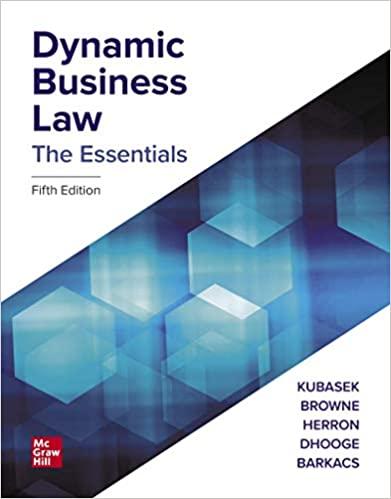In 2006, Jack Kelly, LLC, entered into a commercial lease agreement for a second-floor space of a
Question:
In 2006, Jack Kelly, LLC, entered into a commercial lease agreement for a second-floor space of a building located in Manhattan. The lease stated that “Tenant shall use and occupy the Demised Premises for general offices of an executive recruiting firm. . . [and] for no other purpose.” Additionally, the lease also stated that tenants could not use the rented space in any manner that violated the certificate of occupancy for the building or violated any laws or regulations. In 2007, Jack Kelly discovered that the certificate of occupancy for the building required that the rented premises be used only for residential purposes. Jack Kelly subsequently asked the leasing company to amend the certificate of occupancy, but the leasing company did not comply. Following the leasing company’s failure to amend the certificate of occupancy, Jack Kelly vacated the space in 2009 and filed a claim of action for rescission, seeking a declaratory judgment that the lease was invalid and unenforceable, among other things. Although the trial court granted summary judgment to the defendants, in the ensuing appeal, the appellate court reversed the decision. What elements must be present to prove mutual mistake? How does Jack Kelly’s case fulfill all the elements?
Step by Step Answer:

Dynamic Business Law The Essentials
ISBN: 9781260253382
5th Edition
Authors: Nancy Kubasek, M. Neil Browne, Daniel Herron, Lucien Dhooge, Linda Barkacs





